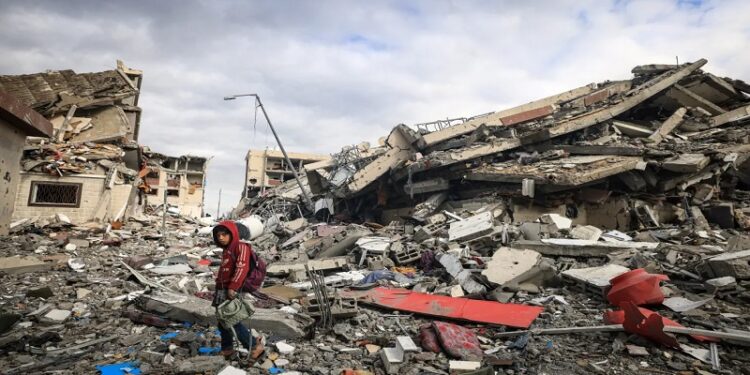The massive destruction of homes and infrastructure ‘severely compromises’ the ability to meet basic needs, the UN said.
Israel’s military offensive has turned much of northern Gaza into an uninhabitable moonscape. Whole neighborhoods have been erased. Homes, schools and hospitals have been blasted by air raids and scorched by tank fire.
Some buildings are still standing, but most are battered shells.
The ceasefire has allowed residents who remained in Gaza City and other parts of the north to venture out to survey the destruction and try to locate and bury relatives.
A United Nations-led aid consortium estimates that more than 234,000 homes have been damaged across Gaza and 46,000 destroyed, amounting to about 60 percent of the housing stock in the territory, which is home to some 2.3 million Palestinians.
In the north, the destruction of homes and civilian infrastructure “severely compromises the ability to meet basic requirements to sustain life”, it said.
Israel’s bombardment and ground offensive have displaced more than 1.8 million people, nearly 80 percent of Gaza’s population, with most having sought refuge in the south, according to the UN humanitarian affairs office.
Israeli troops have barred people from returning to the north during the ceasefire.
The UN says the truce made it possible to scale up the delivery of food, water and medicine to the largest volume since the start of the war and to bring in desperately needed fuel for homes, hospitals and water treatment plants.
But the 160 to 200 trucks a day is still less than half of what Gaza was importing before the fighting, even as humanitarian needs have soared.
Five days into the truce, residents were still waiting for hours to buy gas and cooking fuel.
Israeli troops have barred people from returning to the north during the ceasefire.
The UN says the truce made it possible to scale up the delivery of food, water and medicine to the largest volume since the start of the war and to bring in desperately needed fuel for homes, hospitals and water treatment plants.
But the 160 to 200 trucks a day is still less than half of what Gaza was importing before the fighting, even as humanitarian needs have soared.
Five days into the truce, residents were still waiting for hours to buy gas and cooking fuel.
Source: Aljazeera News






 WhatsApp us
WhatsApp us 

